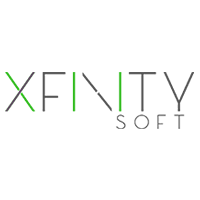Menu

In today’s fast-paced and ever-changing business landscape, the need for adaptability and agility has become paramount. Companies that can quickly respond to market changes and customer needs have a competitive advantage. Business agility is all about streamlining processes, fostering innovation, and embracing change. In this comprehensive guide, we’ll explore the essential tools, frameworks, and mindsets required to master business agility and drive success in your organization.
Before diving into the tools and techniques, it’s essential to understand why business agility is so crucial for modern organizations. Here are a few compelling reasons:
Selecting an appropriate agile framework is the first step in embracing business agility. Let’s explore some popular options:
Scrum is an iterative, incremental framework that encourages collaboration, transparency, and continuous improvement. It is ideal for complex projects that require frequent feedback and adjustments.
Kanban is a visual workflow management system that emphasizes continuous delivery and minimizes work-in-progress (WIP). It’s perfect for teams that need to manage ongoing work and prioritize tasks effectively.
Lean focuses on eliminating waste, improving efficiency, and maximizing customer value. This framework is suitable for organizations aiming to streamline their processes and optimize resources.
Waterfall is a sequential project management approach with clearly defined stages and deliverables. While it’s not strictly an agile framework, it can be beneficial for projects with stable requirements and minimal changes.
Choosing the right framework depends on your project goals, team size, and organizational culture. Remember, no one-size-fits-all solution exists – you may need to experiment and adapt to find the perfect fit for your organization.
Once you’ve chosen a suitable framework, it’s essential to establish efficient agile processes. Here are three powerful methods to consider:
The Plan-Do-Check-Act (PDCA) cycle is an iterative, four-step approach to problem-solving and continuous improvement. The cycle involves:
The Observe, Orient, Decide, Act (OODA) loop is a decision-making process especially useful for teams working under tight deadlines and rapidly changing conditions. The four steps of the OODA loop are:
Systems Thinking Approach to Implementing Kanban (STATIK) is a process designed to help teams efficiently adopt the Kanban framework. The steps involved in STATIK include:
Depending on your project requirements, you may need to combine or customize these processes to optimize your agile journey.
To streamline your software development and project management workflow, consider incorporating the following best practices:
OKR is a goal-setting framework that helps teams define, measure, and achieve their objectives. By establishing clear and measurable goals, you can track progress and ensure alignment across the organization.
EBM is a data-driven approach to decision-making that focuses on assessing and enhancing the value of your products while minimizing risks and uncertainties. Implementing EBM can help you make informed choices and improve the efficiency of your agile processes.
DevOps is a set of practices that combine software development and IT operations, promoting collaboration and automation to enhance the speed and quality of software delivery. Integrating DevOps with your agile processes can lead to faster releases and improved feedback loops.
An agile SDLC emphasizes iterative development, continuous integration, and regular feedback to bridge the gap between requirements and solutions. Adopting an agile SDLC can boost collaboration and ensure timely delivery of high-quality software.
Feedback loops are essential for successful agile development, as they provide opportunities for improvement and quality enhancements. To extract valuable insights from feedback loops, follow these steps:
Agile transformations involve adopting new tools, processes, and mindsets to foster a culture of adaptability and continuous improvement. Here are some key concepts to consider during your agile transformation journey:
Understanding the role and purpose of each element in the agile process is essential for a successful transformation. Systems thinking helps you identify interdependencies and optimize the entire system, rather than focusing on individual components.
Adopting business agility principles can enhance your team’s ability to adapt to changes and new requirements during the development process. These principles encourage innovation, collaboration, and a customer-centric approach.
The theory of constraints is an analytical approach that helps you identify and address bottlenecks in your processes. By proactively addressing constraints, you can improve efficiency and facilitate a smoother agile transformation.
An agile mindset is critical for success, as it emphasizes adaptability, collaboration, and continuous improvement. To foster an agile mindset within your organization, consider these strategies:
By fostering an agile mindset, you create an environment where employees can thrive and drive innovation, ultimately leading to greater business success.
Mastering business agility is crucial for organizations to stay ahead in today’s competitive and rapidly changing landscape. By selecting the right agile framework, implementing efficient processes, adopting best practices, harnessing the power of feedback loops, embracing agile transformations, and cultivating an agile mindset, you can drive success and create a culture of adaptability and continuous improvement.
Now is the time to invest in your organization’s agility and future-proof your business. Start your journey by assessing your current practices, evaluating your goals and requirements, and engaging experts to help you navigate the complexities of agile implementation. Together, you can unlock your organization’s full potential and achieve long-lasting success.
Embrace the future of business by partnering with XploreAgile, the experts in agile transformations. Our dedicated consultants will work closely with your team to select the right frameworks, implement best practices, and cultivate an agile mindset throughout your organization.
Don’t let the competition leave you behind. Equip your team with the knowledge and tools needed to thrive in the fast-paced business landscape. Reach out to XploreAgile today, and let’s embark on your agile journey together!


Over the last three months, I have had the opportunity to collaborate with David and test his Situational courses. It has been an exceptional experience with numerous practical lessons and enjoyable discussions. I strongly endorse his training techniques and the courses he provides.

Senior Manager
xploreAgile (XA) are passionate
providers of Agile Consulting,
Coaching and Training Services
VAT Registration Number: GB 332 3136 42
Copyright by XploreAgile. All rights reserved.

Joe Doe in London, England purchased a

